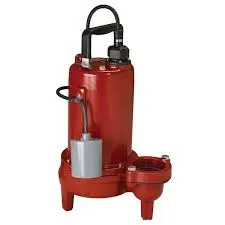Kurdish
- Afrikaans
- Albanian
- Amharic
- Arabic
- Armenian
- Azerbaijani
- Basque
- Belarusian
- Bengali
- Bosnian
- Bulgarian
- Catalan
- Cebuano
- Corsican
- Croatian
- Czech
- Danish
- Dutch
- English
- Esperanto
- Estonian
- Finnish
- French
- Frisian
- Galician
- Georgian
- German
- Greek
- Gujarati
- Haitian Creole
- hausa
- hawaiian
- Hebrew
- Hindi
- Miao
- Hungarian
- Icelandic
- igbo
- Indonesian
- irish
- Italian
- Japanese
- Javanese
- Kannada
- kazakh
- Khmer
- Rwandese
- Korean
- Kurdish
- Kyrgyz
- Lao
- Latin
- Latvian
- Lithuanian
- Luxembourgish
- Macedonian
- Malgashi
- Malay
- Malayalam
- Maltese
- Maori
- Marathi
- Mongolian
- Myanmar
- Nepali
- Norwegian
- Norwegian
- Occitan
- Pashto
- Persian
- Polish
- Portuguese
- Punjabi
- Romanian
- Russian
- Samoan
- Scottish Gaelic
- Serbian
- Sesotho
- Shona
- Sindhi
- Sinhala
- Slovak
- Slovenian
- Somali
- Spanish
- Sundanese
- Swahili
- Swedish
- Tagalog
- Tajik
- Tamil
- Tatar
- Telugu
- Thai
- Turkish
- Turkmen
- Ukrainian
- Urdu
- Uighur
- Uzbek
- Vietnamese
- Welsh
- Bantu
- Yiddish
- Yoruba
- Zulu
Telephone: +86 13120555503
Email: frank@cypump.com
ئاب . 13, 2024 23:16 Back to list
Selecting the Right Pump for Efficient Slurry Transportation and Management in Industrial Applications
The Role of Pumps in Slurry Transportation An Essential Overview
When it comes to industrial processes, the transportation of slurry—a mixture of solids and liquids—plays a crucial role in several applications, including mining, wastewater treatment, and mineral processing. The efficiency of slurry transportation is heavily dependent on the types of pumps used, which must be specifically designed to handle the unique challenges posed by slurries.
Understanding Slurry and Its Challenges
Slurry can vary widely in composition, viscosity, density, and particle size. These variations create distinct challenges for pumping systems. For instance, the presence of solid particles can lead to issues such as abrasion, clogging, and increased wear on pumps. Additionally, high viscosity can create significant resistance during pumping, making it essential to select the right pump technology that can overcome these challenges while ensuring efficiency and reliability.
Types of Pumps Used for Slurry
Several types of pumps are commonly used in slurry applications, each with its advantages and disadvantages
. Here are some of the most prevalent1. Centrifugal Pumps Centrifugal pumps are widely used for pumping slurry due to their ability to handle low to moderate concentrations of solids. They work on the principle of converting rotational energy into hydrodynamic energy. However, for high-solid-content slurries, centrifugal pumps may struggle, leading to potential clogging and decreased efficiency.
2. Positive Displacement Pumps These pumps are more suited for high-viscosity slurries and can handle higher concentrations of solids. Positive displacement pumps work by trapping a fixed amount of slurry and then forcing it through the discharge. This consistent flow allows them to effectively manage dense slurries that centrifugal pumps may not effectively handle.
pump used for slurry

3. Progressing Cavity Pumps A specific type of positive displacement pump, progressing cavity pumps are highly effective for handling viscous and abrasive slurries. Their helical rotor design allows for smooth and continuous flow, making them ideal for applications where variability in flow needs to be minimized.
4. Submersible Pumps Submersible pumps are often used in mining and wastewater applications where slurries need to be pumped from deep below the surface. They are designed to operate submerged and can handle a variety of slurry compositions.
Key Factors in Selecting Slurry Pumps
When selecting a pump for slurry applications, several key factors must be considered
- Solids Concentration Understanding the solid content will help determine which pump type is appropriate. - Particle Size and Shape Larger or irregularly shaped particles require different considerations compared to smaller, round particles. - Viscosity The viscosity of the slurry will affect the pump’s ability to move it efficiently. - Temperature Operating temperature can impact the pump material choice, especially in processes involving chemical reactions. - Environmental Conditions Factors such as exposure to corrosive substances or extreme temperatures can influence pump material and design choices.
Conclusion
The use of the right pump for transporting slurry is essential to the efficiency and success of many industrial processes. With a variety of options available—centrifugal, positive displacement, progressing cavity, and submersible—companies can tailor their pumping solutions to meet specific needs. By considering factors such as solids concentration, particle size, and viscosity, industries can ensure the effective handling of slurries, ultimately leading to improved productivity and reduced downtime. As technology advances, the development of even more efficient and durable pumping solutions will continue to push the boundaries of what is possible in slurry transportation.
-
ISG Series Pipeline Pump - Chi Yuan Pumps | High Efficiency, Durable Design
NewsAug.01,2025
-
Advanced Flue Gas Desulfurization Pump with GPT-4 Turbo | Durable & Efficient
NewsJul.31,2025
-
ISG Series Vertical Pipeline Pump - Chi Yuan Pumps | Advanced Hydraulic Design&Durable Construction
NewsJul.31,2025
-
ISG Series Vertical Pipeline Pump - Chi Yuan Pumps | Energy Efficient & Low Noise
NewsJul.31,2025
-
pipeline pump - Chi Yuan Pumps Co., LTD.|High Efficiency&Low Noise
NewsJul.31,2025
-
ISG Series Vertical Pipeline Pump - Chi Yuan Pumps Co., LTD.|High Efficiency, Energy Saving, Low Noise
NewsJul.30,2025










